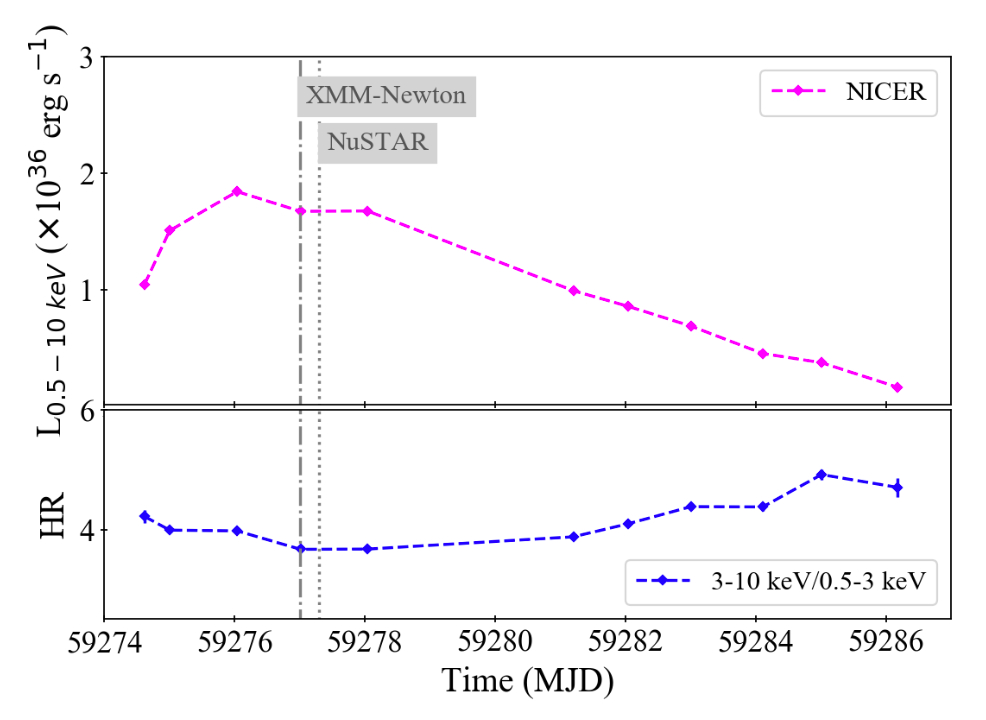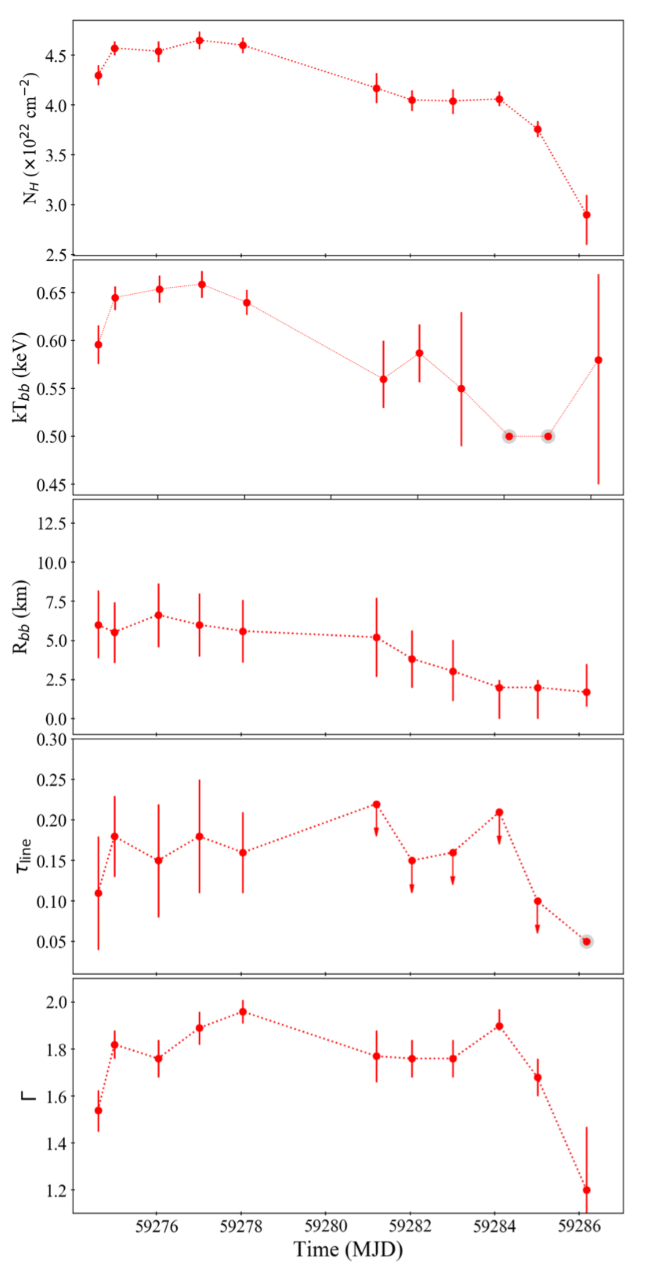NICER / ISS Science Nugget
for July 21, 2022
Accretion features on display in an eclipsing pulsar system
The X-ray binary system known as Swift J1749.4-2807 is unique. Consisting of a neutron star that draws matter from a companion star approximately two-thirds the mass of our Sun, it produces - when in outburst - X-ray pulses that repeat 518 times each second, representing the high spin rate of the neutron star. The pair of stars orbit one another every 8.8 hrs, and the orbital plane is oriented very nearly edge-on as seen from Earth, so that our view of the neutron star is obstructed by its companion during a portion of each orbit. Swift J1749 is the only known eclipsing accreting millisecond pulsar.
After 11 years of quiescence, Swift J1749 was detected in outburst in March of 2021 by ESA's INTEGRAL observatory. NICER observations were soon initiated and tracked the outburst's evolution over nearly two weeks; NASA's NUSTAR telescope and ESA's XMM-Newton observatory also briefly observed Swift J1749 near the peak of the outburst. Analysis of these datasets has revealed, among other results, two phenomena not seen in previous outbursts of Swift J1749. First, the X-ray emission from the neutron star was dominated by the thermal glow of a hot-spot on its surface, and the size and temperature of the spot were found to evolve with time; specifically, the spot cooled and its radius grew smaller toward the end of the outburst, as the mass-accretion rate fell. Second, spectroscopy of the X-ray emission performed by all three observatories detected an absorption line at 7 keV, which represents highly ionized iron atoms but blue-shifted in energy (i.e., moving toward us); this feature is a clear indication that a substantial portion of the matter leaving the companion star is not reaching the neutron star but is forming an outflow that is departing the system - this is known as a "non-conservative" mass-transfer scenario.
A manuscript describing these results, led by Dr. A. Marino (Institute of Space Sciences, Spain), was recently accepted for peer-reviewed publication in the UK journal Monthly Notices of the Royal Astronomical Society..


Figure:
Left: Evolution of the 2021 outburst of the accreting millisecond pulsar system Swift J1749. The top panel shows X-ray luminosity as measured by NICER (pink points), with the dates of NuSTAR and XMM-Newton snapshot observations (in Modified Julian Day) indicated by vertical lines. Blue points in the bottom panel track the "hardness ratio," the relative flux levels in NICER's "hard" X-ray (3-10 keV photon energy) and "soft" X-ray (0.5-3 keV) bands. The system's X-ray emission is soft near the peak of the outburst, but relatively hard at the start and end.
Right: Trends in the parameters of a spectral model fit to the NICER data across the outburst. The model includes absorption of X-rays in the interstellar material along the line of sight from Earth to Swift J1749 (N_H); the blackbody temperature (kT_bb) and radius (R_bb) of the hotspot on the neutron star surface; the strength of the iron absorption feature (tau_line) due to the wind emitted by the binary system; and the slope (Gamma) of the nonthermal component extending to high X-ray energies.
<< Previous
Main Index